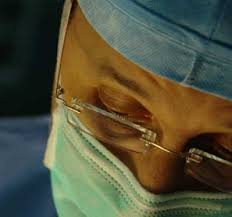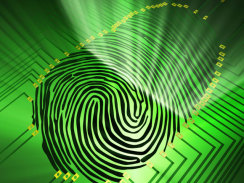February 6th, 2011 by DrWes in Better Health Network, Opinion
No Comments »

 Heart disease and February: What relationship could be more cozy? From the scary risks of shoveling snow (yep, you could die, so be sure to lift a little at a time), Mercedes-sponsored red dress parades and government-sponsored National Wear Red Day®, to tips for identifying heart attacks in women (men, you need a different month I guess), February has all the important stories to improve your awareness. Such a polite term “awareness.”
Heart disease and February: What relationship could be more cozy? From the scary risks of shoveling snow (yep, you could die, so be sure to lift a little at a time), Mercedes-sponsored red dress parades and government-sponsored National Wear Red Day®, to tips for identifying heart attacks in women (men, you need a different month I guess), February has all the important stories to improve your awareness. Such a polite term “awareness.”
But I wonder, now that the Internet is upon us and people are seeing their insurance rates and co-pays skyrocket, if maybe we’re shooting ourselves in the foot with all this heart-month marketing hype. People are sick and tired of testing “just to be sure.” It’s starting to directly cost them a fortune, and people are frustrated at having to pay a fortune for healthcare, let alone heart care.
I know, I know — I should be at the forefront of working with patients to stomp out heart disease. And goodness, people DO need to be attuned to diet, exercise, and weight loss. But the reality is, if we’re giving you the 10 latest tips on how to detect a heart attack, we’re probably a bit too late.
That’s the problem with all these press releases: While there’s a need to raise “awareness” of heart health, there’s also a very real need for people to take us — heart disease professionals — seriously to help cut costs in healthcare here. The last thing our healthcare system needs is more frivolous testing. Yet this is exactly what all this marketing does for our healthcare system — and it helps those with the largest PR budgets most of all. Read more »
*This blog post was originally published at Dr. Wes*
February 1st, 2011 by DrWes in Better Health Network, Opinion
No Comments »

 It came as a Twitter “follow” from @coldfeet65, a self-proclaimed “Nurse Practitioner Hospitalist.” I had never heard this term before. Does it mean a nurse practitioner who cares for hospitalists? Or is it a hospitalist who is a nurse practitioner? Or maybe it’s a nurse practitioner who helps hospitalists? (Honestly, I think I know which one she means, but you get my point.)
It came as a Twitter “follow” from @coldfeet65, a self-proclaimed “Nurse Practitioner Hospitalist.” I had never heard this term before. Does it mean a nurse practitioner who cares for hospitalists? Or is it a hospitalist who is a nurse practitioner? Or maybe it’s a nurse practitioner who helps hospitalists? (Honestly, I think I know which one she means, but you get my point.)
Perhaps this is a prescient glimpse to healthcare of the future, where our more typical nurse and doctor labels are supplanted by more and more monikers that serve to confuse, rather than clarify, each of our roles in healthcare delivery. As specialists in cardiology, we’ve seen a similar trend with cardiology hospitalists. But we should be clear what this means to the patients and doctors going forward.
No doubt most people in America still expect to see a doctor when they come to the hospital. Increasingly, it appears that might not be the case. Your doctor might be a robot while a nurse (aka, nurse practitioner) will be the one providing the hands-on care in the inpatient setting. Is that a good thing? Honestly, I’m not sure.
No one argues that the costs in healthcare need to be cut. No doubt the central authority has deemed that doctor salaries will be a big part of that effort. Already, 20 states have cut physician Medicaid payments for fiscal year 2010 and, given the current economic pressure on our states both now and after they start feeling the financial impact of the “Affordable” Care Act in 2019, this trend is not likely to improve anytime soon. As a result, we are seeing that the world is full of “creative solutions” to our healthcare access crisis and the evolution to “nurse practitioner hospitalists” might be one of these. Read more »
*This blog post was originally published at Dr. Wes*
January 28th, 2011 by DrWes in Better Health Network, Opinion
No Comments »

 You know it’s bad when the attending surgeon has to write this at the beginning of his operative note:
You know it’s bad when the attending surgeon has to write this at the beginning of his operative note:
“I certify that the services for which payment is claimed were medically necessary and that no qualified resident was available to perform the services.”
So there you have it.
-WesMusings of a cardiologist and cardiac electrophysiologist.
*This blog post was originally published at Dr. Wes*
January 15th, 2011 by DrWes in Health Policy, Opinion
No Comments »

 From CBS News:
From CBS News:
President Obama is planning to hand the U.S. Commerce Department authority over a forthcoming cybersecurity effort to create an Internet ID for Americans, a White House official said here today.
It’s “the absolute perfect spot in the U.S. government” to centralize efforts toward creating an “identity ecosystem” for the Internet, White House Cybersecurity Coordinator Howard Schmidt said.
That news, first reported by CNET, effectively pushes the department to the forefront of the issue, beating out other potential candidates including the National Security Agency and the Department of Homeland Security. The move also is likely to please privacy and civil liberties groups that have raised concerns in the past over the dual roles of police and intelligence agencies.
No, they’re not talking about a national ID card, just an international internet ID. The announcement came at an event today at the Stanford Institute for Economic Policy Research, where U.S. Commerce Secretary Gary Locke and Schmidt spoke. The Obama administration is currently drafting what it’s calling the National Strategy for Trusted Identities in Cyberspace, which Locke said will be released by the president in the next few months. (An early version was publicly released last summer.)
“We are not talking about a national ID card,” Locke said at the Stanford event. “We are not talking about a government-controlled system. What we are talking about is enhancing online security and privacy and reducing and perhaps even eliminating the need to memorize a dozen passwords, through creation and use of more trusted digital identities.”
Imagine: Anyone registered with such a cyber-ID who conferences with their doctor via a “secure server” can also be tracked by the government with such a mechanism. And the issue of not needing more than one password? While convenient, the ramifications of multiple accounts being compromised if a data leak were to occur remains with such a mechanism. Read more »
*This blog post was originally published at Dr. Wes*
January 8th, 2011 by DrWes in Better Health Network, Health Tips, Humor, Opinion
No Comments »

This comment [with a specific photo] was posted on my blog earlier:
“I was reading one of your old posts about magnets and I was wondering if a magnetic front closure on a bra would be a problem? There’s a warning on the label but I know part of that is just due to liability. What about this bra that has a magnet clasp on the front? If the magnet hits right in between the breasts would it be close enough to the device that it could interfere? Also does having a magnet that close change the settings or turn off a defibrillator/pacemaker early? I’m sure most doctors would say just wear another bra but this bra in particular is very comfy! I’ve tried it on but not worn it for extended periods of time. Luckily this is one of the only major complaints I’ve had about having heart disease and a [medical] device at such a young age.”
First, let me say thank you for asking this question. Who knew research could be so, er, entertaining! Second, this question reinforces why medical blogging is so great: You learn something new every day.
Now, as I slap myself back to a bit more professional stance, I’ll summarize by saying I think you’ll be okay to use such a bra with some precautions. Given the picture and the clasp’s location, this bra is more likely to interfere with the pacemaker of the partner you hug rather than yourself, provided your pacemaker was implanted over three centimeters from the magnetic clasp. Since most pacemakers and defibrillators are implanted just below the collar bone, the chance of the magenetic clasp to interfere with your device is remote. Read more »
*This blog post was originally published at Dr. Wes*
Heart disease and February: What relationship could be more cozy? From the scary risks of shoveling snow (yep, you could die, so be sure to lift a little at a time), Mercedes-sponsored red dress parades and government-sponsored National Wear Red Day®, to tips for identifying heart attacks in women (men, you need a different month I guess), February has all the important stories to improve your awareness. Such a polite term “awareness.”












